What if this year we stayed in France for the holidays? Here is our complete guide to visit the Château de Fontainebleau!
Located in Seine-et-Marne near the centre of Fontainebleau, about 60 kilometres south-east of Paris, the Château de Fontainebleau is a royal castle of Renaissance and Classical styles, having crossed the history of France, notably that of the monarchy since the 12th century. Main residence of the kings of France from François I to Louis XIV (up to 1682), he became a secondary residence of Louis XIV to Napoleon III. Nicknamed “the house of the centuries” by Napoleon I, it is a high place in the history of France, whose construction – which spread from the 12th to the 19th centuries – left the indelible borrowing of successive kings who ordered their own designs and works, according to the styles of their time (medieval style, Renaissance and Classical style, influences of Italian art and French tradition). Based on its history, this multi-secular building was ranked on the list of Historical Monuments in 1862 and the UNESCO World Heritage in 1981.
Would you like to visit the Château de Fontainebleau? We tell you everything or almost to organize your trip!
History of the Château de Fontainebleau
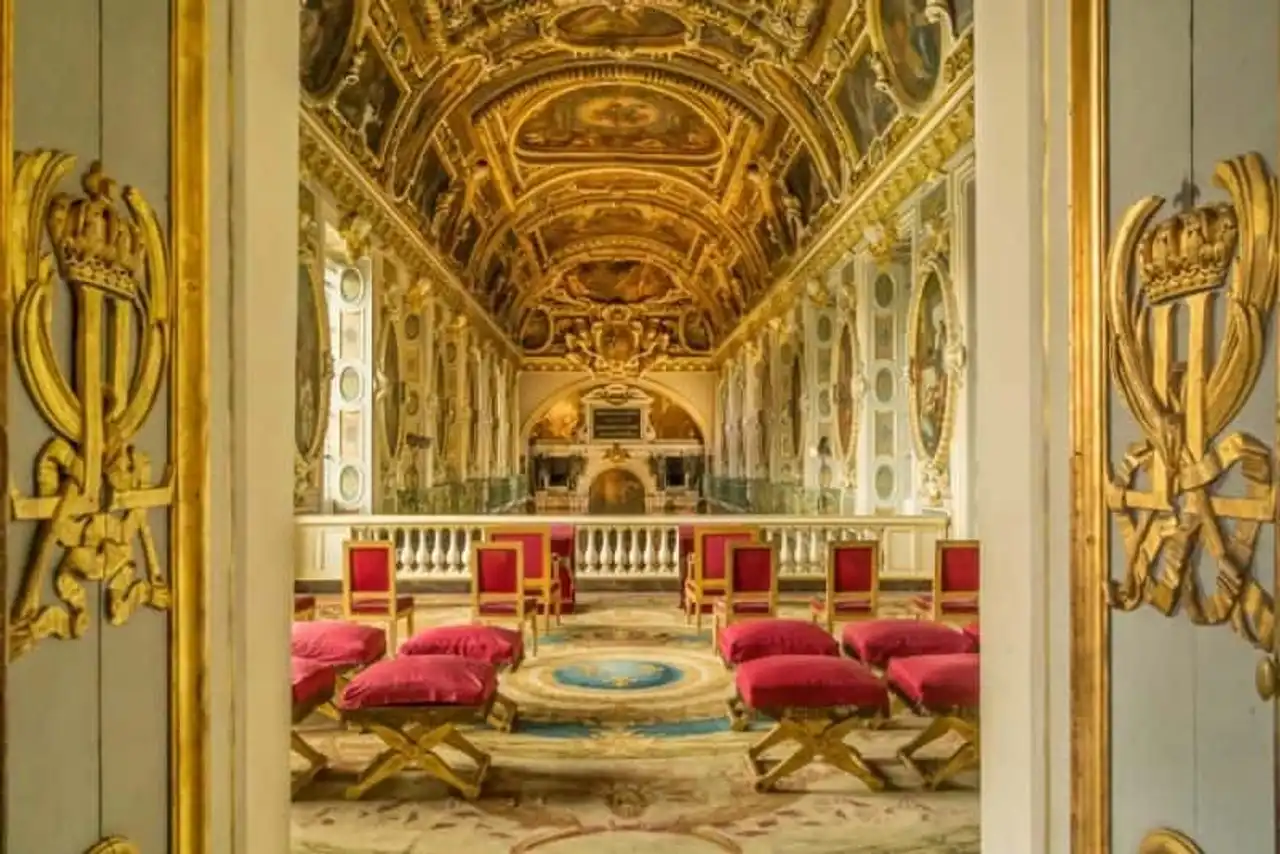
Photo credit: From Michael Warwick / Shutterstock.com
The history of this monument dates back to the 12th century, when the existence of a fortified castle at this location was attested in 1137 for the first time, historians likely thinking that this first castle was built under Louis VI or Philippe I in the 11th century. A privileged residence of the kings of the Middle Ages – Louis IX, Philippe le Bel, Philippe VI, Charles V, Charles VI - he was abandoned during the Hundred Years War, with Île-de-France occupied by the English.
The Château de Fontainebleau experienced eight centuries of continuing sovereign presence from the Capetians to the Orleanais through the Bourbons. Selected by François I As a hunting and residence, he renovated the feudal castle to install a modern palace in the Italian architectural style of the time. François I wanted to make the Château de Fontainebleau a home of Renaissance art and a “new Rome” (the kings of France are not always the most modest in the country...).
Later, Henri IV (1553-1610) will build the gardens and enlarge the castle after 40 years of abandonment. From the Renaissance to the 17th century, the Château de Fontainebleau also became an important art gallery, the kings enriching their personal collections of art objects brought back from their journeys or given by other sovereigns.
Only the dungeon and some traces of courtines have remained of the feudal era. The Château de Fontainebleau that we visit today is described as a jewel of architecture of the modern era (from the 16th to the 18th centuries), whose most representative emblem is the famous iron-to-cheval staircase, built under Louis XIII.
What to see and do at the Château de Fontainebleau?
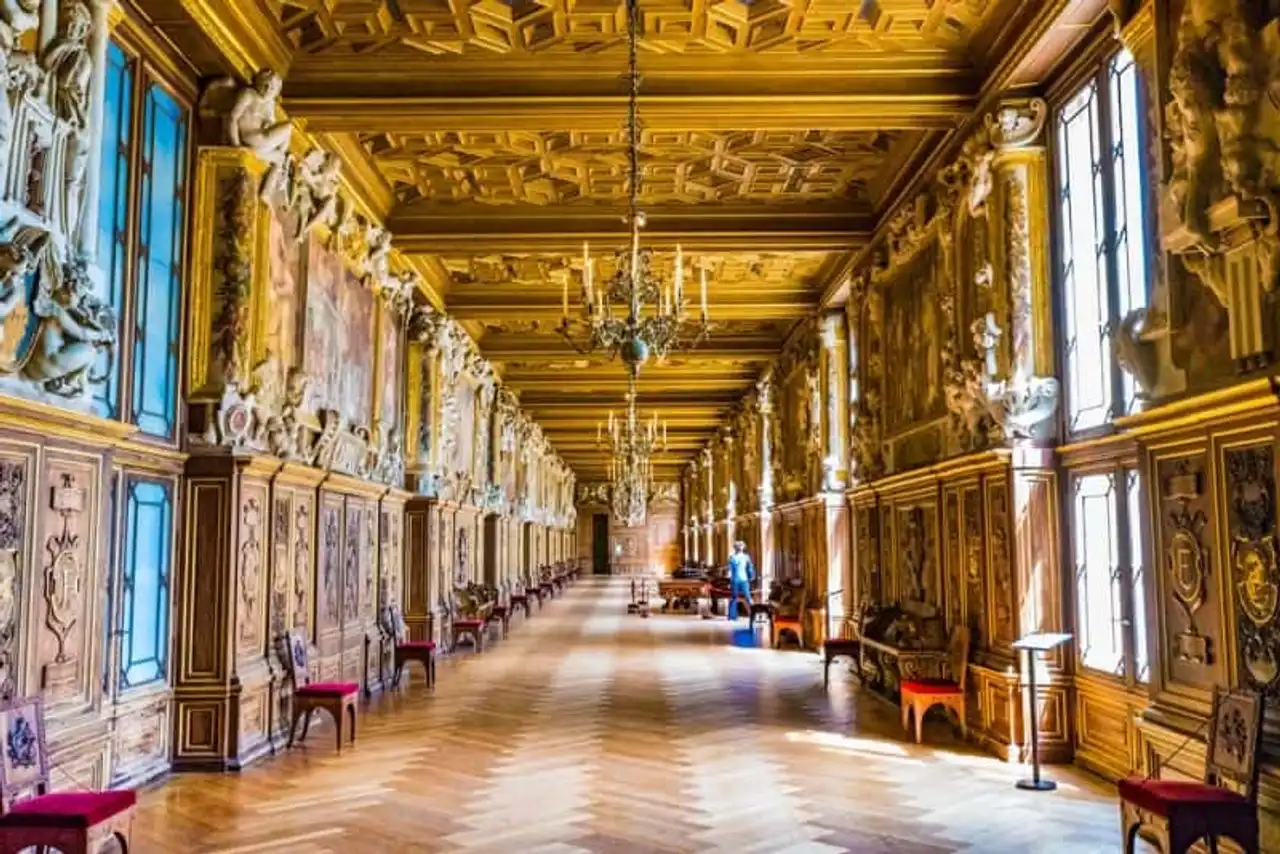
Photo credit: From Takashi Images / Shutterstock.com
The “house of the centuries” remains kings, visiting from outside through the Castle gardens , very neat and surrounded by greenery, from the pond to the carp and its view on the pavilion, the fountain of Diane (of the 17th century), the Carré d’Eau, the large canal – 1.2 kilometers long and 40 meters wide – and the water round with its center, the statue of the Tiber. These are no less than 130 hectares of parks and gardens, separated by the Cascades Avenue.
Inside the Château de Fontainebleau, countless rooms are to be seen, including: the iron-to-cheval staircase, the Arms Pavilion, the Trinity Chapel , the apartments of the queen mothers and the Pope, the living rooms, the rooms, the galleries of art – notably the Fastes Gallery and the Assiettes Gallery -, the wing of the ministers – said Lower Aile -, the François I Gallery – built between 1528 and 1530 -, the apartments of Napoleon I, the Guards Hall, the Escalier of the King (1748-1749), the Oval Chamber (of Louis XIII). The 1530 rooms, apartments, rooms and rooms were built between the 16th and 19th centuries and thus trace the life of the sovereigns in the style of their time. The Château de Fontainebleau is one of the most important collections of antique furniture from France, sculptures and paintings.
Outside, a small walk is necessary: you can offer a beautiful hike (very easy) in the Fontainebleau Forest – 25,000 hectares, labeled “Exceptional Forest” – which borders the Castle, exploring the Rocher Cailleau, the massif of the three gables, the gorges of Apremont, the cave of the brigands, the Rocher Canon. Rendez-vous on Alltrails to see the course. The Denecourt-Colinet trail (blue marked) allows a walk of about two hours on 4.5 kilometres. It is a little crowded path, which passes to the Belvedere Louis VII, the Belvedere of Mount Louis-Philippe, the Bournet viewpoint, with beautiful views of the forest, the town of Fontainebleau and Avon.
How to visit the Château de Fontainebleau?
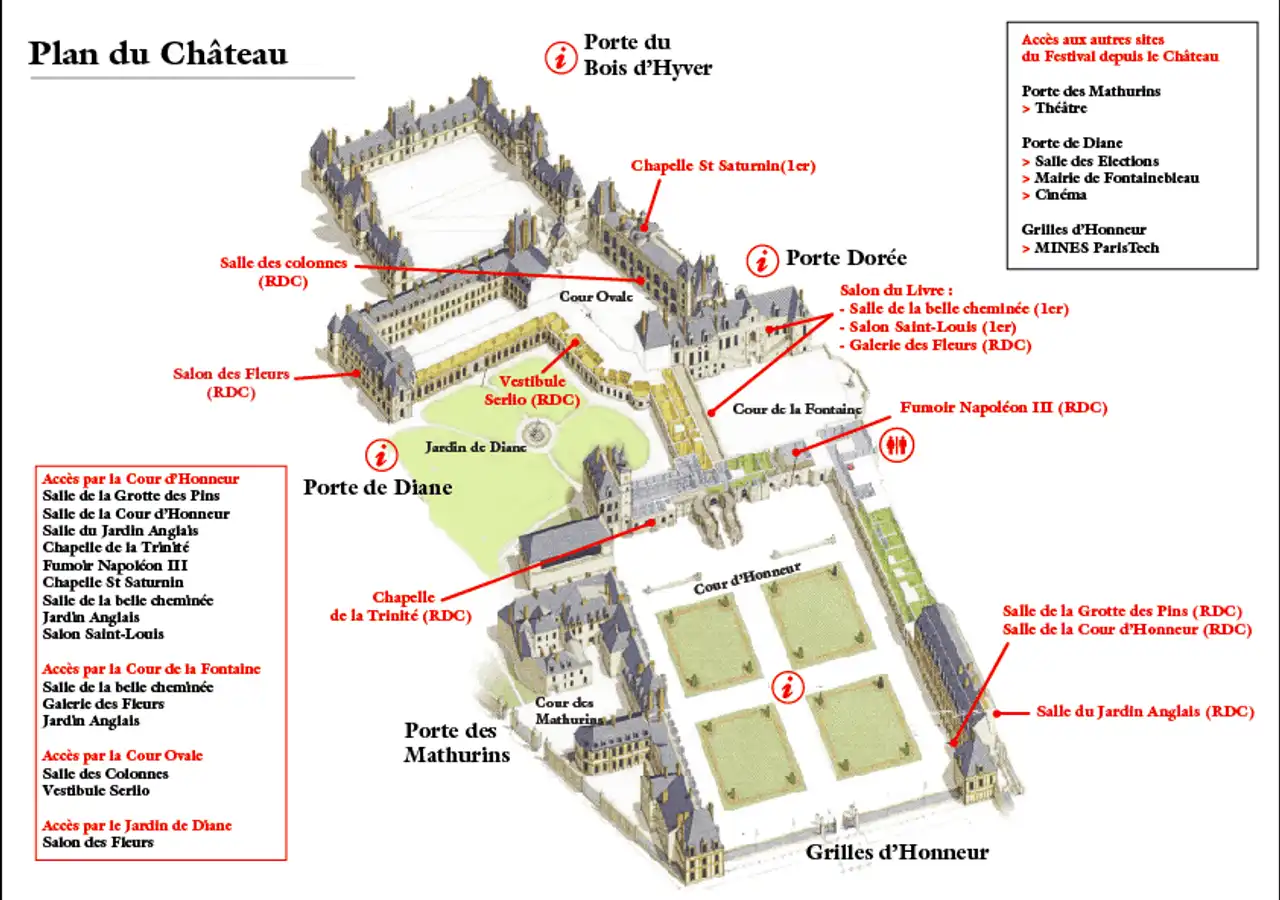
Photo credit: Culturegouv
Visit the Château de Fontainebleau can be done three different ways: free visit, guided tour or thematic visit.
Start for example by Large Apartments – the apartment of the Pope, the apartments of the kings of France, the apartment of the Emperor – on a free visit. Then move to the Gallery François I and the room of the Throne of Napoleon I. Count about 2 hours. The Museum of Napoleon I presents a collection of furniture, art and portraits belonging to the imperial family. Then, at Chinese Museum , you will discover the exhibition of Empress Eugénie, which was intended for the relaxation and evenings of the Court.
If you want to fully explore the history of the kings of France, opt for a guided tour , who will reveal to you behind the scenes of this Castle testifying to 8 centuries of history. The visit also allows to discover the Furniture Gallery – presenting the furniture of the missing or redesigned apartments -, the Petits Apartments - of Napoleon I, his wives Joséphine and Marie-Louise, the Turkish Boudoir (in guided tour), the private space of Marie-Antoinette , the imperial theatre of Napoleon III – with if you wish, an audio-guide and/or a touch tablet: the histories-pad, which offers an interactive visit in reality augmented.
Des cultural events are organized all year round, such as the feast of Saint-Hubert, reconstructions in period costumes, concerts and literary readings, trail games with family (at 3pm on the weekend, on reservation). Have a full day to see the Château, the French garden, the two English gardens, the waterfall basin, the four courses, the facades and the canal.
How to go to the Château de Fontainebleau?
To arrive in Paris, the flight comparison Ulysses allows you to find the best offers on flexible dates. From Paris airports, one private shuttle You can go to the Château de Fontainebleau, in 46 minutes from Orly and in 1h11 from Paris-Charles-de-Gaulle (count 320 € return from CDG airport and 220 € from Orly for one person).
♪ train , the Fontainebleau train station is served by the network of the Transilien SNCF commuter trains : from Paris-Gare de Lyon, direction Montargis, Montereau or Laroche-Migennes, to Fontainebleau-Avon, then bus line 1 in the direction of Les Lilas, until the “Château” stop.
To go to the Château de Fontainebleau en car , we have to take A6 since Paris (Porte d’Orléans or Porte d’Italie), take the Fontainebleau exit and follow the signs “Château”.
Schedules and prices of the Château de Fontainebleau
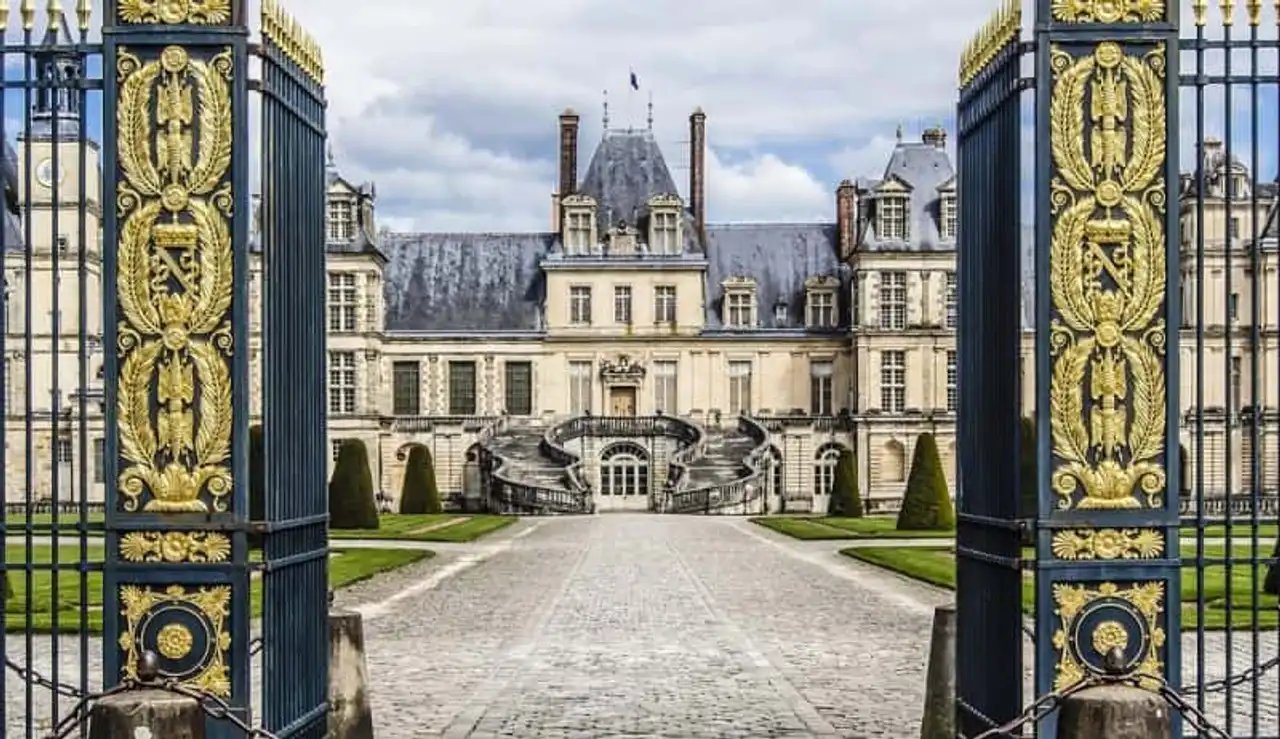
Photo credit: De Jacky D / Shutterstock.com
HORARI
The Château de Fontainebleau is open daily, except Tuesdays, January 1, May 1 and December 25:
- From October to March: 9:30 a.m. to 5 p.m. (last access to 4:15 p.m.),
- From April to September: from 9:30 am to 6 pm (last access to 5:15 pm).
Note : The ballroom closes at 16:15 from October to March and at 17:15 from April to September.
Classes and gardens are open every day:
- From November to February: from 9am to 5pm,
- March, April and October: from 9am to 6pm,
- From May to September: from 9am to 7pm.
Note : The park is open every day 24/7.
RATES
- Full price (Grand Apartments and Musée Napoléon I): 12 €,
- Reduced price : 10 €,
- One hour before closing: 8 €,
- Adult and young costume : 4 €,
- Chinese Museum : 3 €
Note : Admission is free on the first Sunday of each month between September and June. Access to the parks and gardens of the Château de Fontainebleau is free daily.
Good to know.
- Free toilets are at the beginning and end of the course in the castle,
- The instructions for droppings, baby carriers, bags and umbrellas (forbidden in the castle circuits) are free of charge,
- An elevator provides access to the Grand Apartments (persons with reduced mobility).
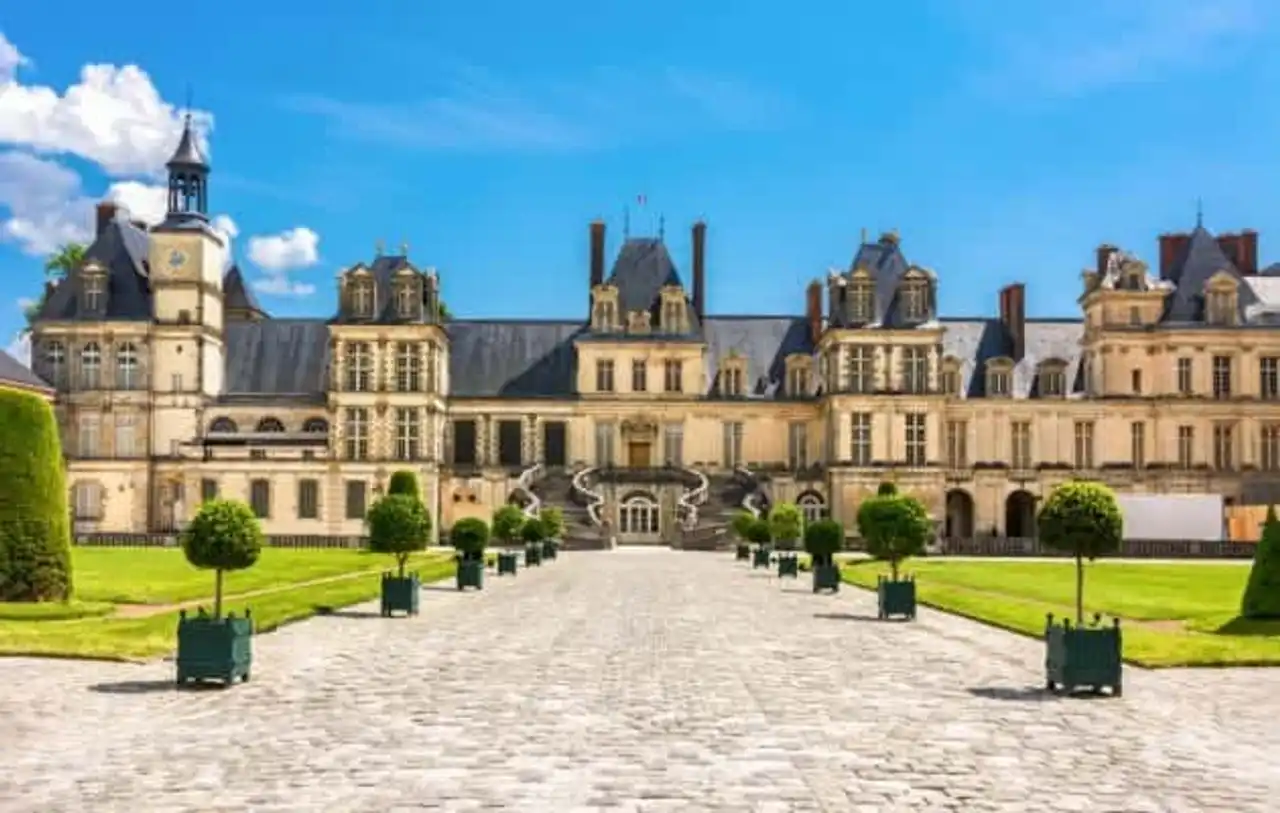






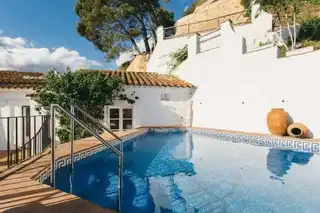
Loading comments ...